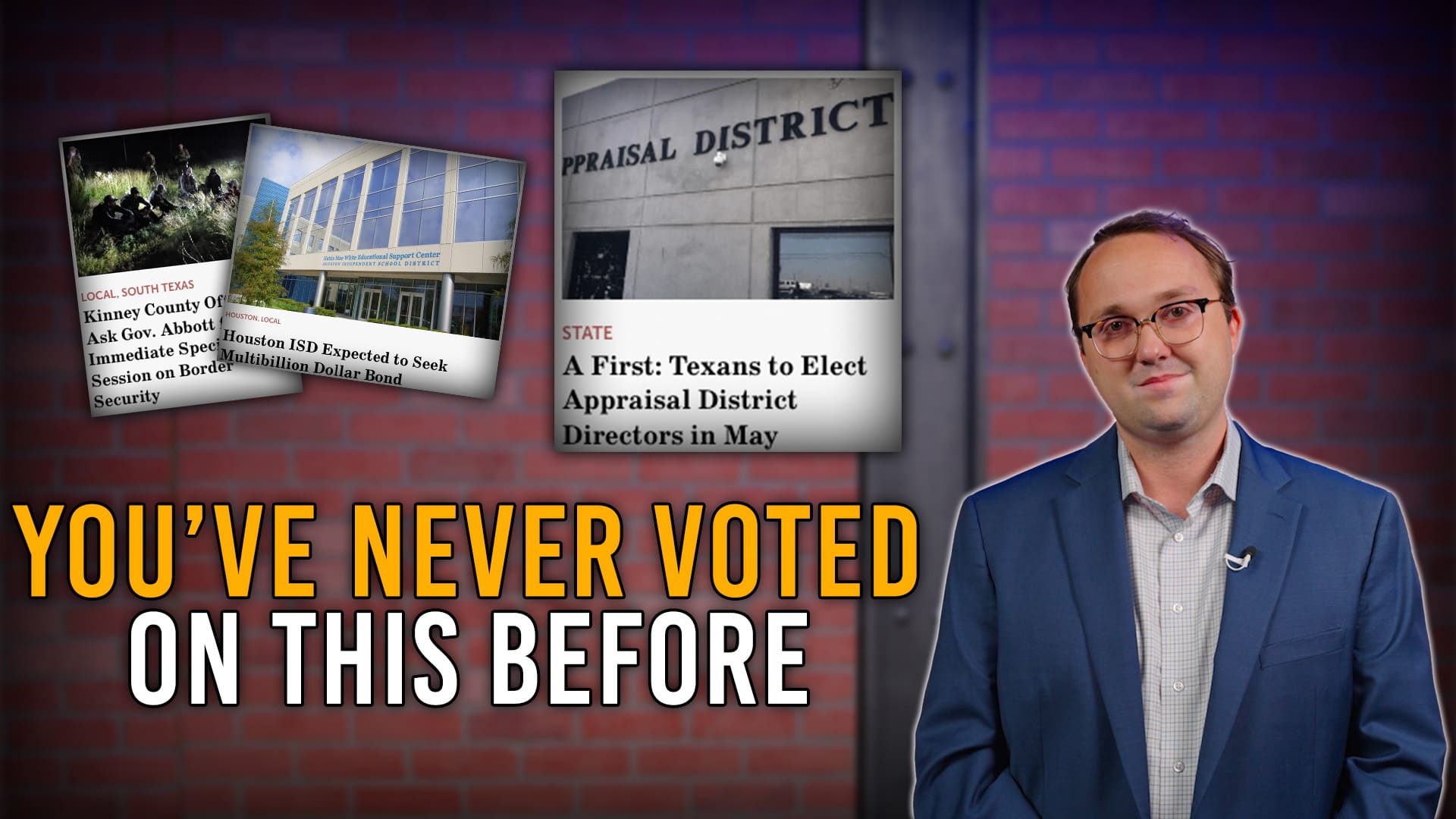With the fight for pension reform behind him, Houston Mayor Sylvester Turner is gearing up for his next big battle, repealing the city’s property tax cap. Houston’s property tax cap is the only remaining barrier standing between taxpayers and unlimited government growth.
The property tax cap currently in effect – not to be mistaken with a revenue cap – was implemented in 2004. After dealing with ever-increasing property taxes, citizens demanded a limit on the amount their local government can increase the property tax revenue collected annually.
Local officials would have you believe the cap is tying their hands, prohibiting them from providing core government services.
Both Turner and his predecessor, Annise Parker, often pointed to the Republican-led state legislature’s failure to implement a cap as a mandate for the city to seek repeal. But state lawmakers already face a spending cap, albeit a weak one.
Indeed, while conservatives in Austin have failed to pressure their colleagues into strengthening their own limitations, that shouldn’t serve as reason for Houston to follow. City officials, who often scoff at pro-taxpayer directives from Austin, should lead in this way by governing within their means.
As a matter of fact, the first time Houston hit its citizen-imposed cap was in 2015. It forced the city to lower the tax rate and allow taxpayers to keep $57 million they would have otherwise handed over. If the cap is removed, officials don’t have to raise taxes, but they would no longer be forced to reduce tax rates to offset rising appraisals.
Without the cap in place, city officials would have taxed and spent that $57 million. In 2016, the cap allowed taxpayers to keep $71 million. In those years the city still collected more money than in the prior year; $35 million and $65 million more, respectively.
Houston officials often falsely claim that they’re the only entity with a municipally-imposed tax limit. While it’s hard to find many of other cities under similar limitations, this is partly due to the fact that many other cities already face hefty revenue and spending limits imposed by their state legislatures.
Also, many responsible municipalities take the threat of losing their commercial and residential tax base seriously. In other words, the threat of ever-increasing tax burdens driving out their tax base is sometimes enough to restrain government taxing and spending without needing to have a hard limit in their city’s charter.
For cities with a population exceeding 100,000, a study found that nearly one in eight have some form of a cap. The study also found that general law cities and cities with higher median incomes tend not to have limits. Municipalities with fewer entities in their metropolitan statistical area, like Houston, are likelier to have a cap over their counterparts in areas with more entities in their MSA, like Dallas-Fort Worth.
New York implemented a statewide property tax cap on all municipal governments and school districts in 2011, however they exempted New York City. The measure limits property tax increases to 2 percent a year or the rate of inflation, whichever is lower. Lawmakers are now proposing legislation to bring NYC under the cap because, “the mayor has increased spending at an astronomical rate since he took office,” said a spokesman for the State Senate GOP.
Contrary to what Turner says about Houston’s cap contributing to the city’s fiscally instability, Moody’s said of New York’s cap, “the tax cap established in 2011 hasn’t led to a drop in governments’ finances because of controlled spending.” Although the financial peculiarities of the cities are very different, Houston hasn’t done much to control or prioritize spending under the cap. That’s the problem. As their taxing authority was limited, they continued their spending spree.
The statement from Moody’s proves that a tax cap alone does not negatively impact a city’s finances or credit ratings, if the officials in charge choose to control spending growth.
Eastpointe, Michigan; Lincoln, Nebraska; Anchorage, Alaska; and Amarillo, Texas all have variations of caps that can only be overridden by a majority of voters. Aside from those cities, some states have their own caps, such as the aforementioned New York, California, Indiana, and the state of New Jersey. Tucson, Arizona, doesn’t have a property tax cap, but is still worth mentioning because they cap the sales tax rate at two percent year-over-year growth.
Here’s a look at how the caps in these cities differ.

In Michigan, taxable values on property are capped at 5 percent increase per year, or the rate of inflation, whichever is less. But the limit only applies as long as the property isn’t sold to another buyer. By increasing the assessed value every year, municipalities can recoup some of the “lost” tax revenue once the owner sells the property. In other words, the cap is lifted each time the property is sold to a different owner.
Both Anchorage and Houston’s caps are floating, meaning that as inflation or population changes, the amount they can collect in property tax revenue can also change.
While Houston’s cap may be an annoyance to city officials, it’s not the only city that has a limit on its ability to increase property taxes. The tax cap is a useful tool for city taxpayers, and they’d be wise to #KeepTheCap in November. Officials should focus on the real problem—out of control spending and the failure of city officials to prioritize core services.




